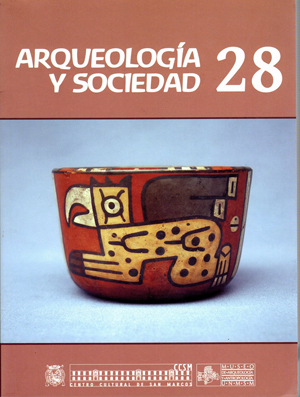CHACHAPOYA SETTLEMENTS IN NORTHERN PROVINCE OF LUYA, DEPARTMENT OF AMAZONAS
DOI:
https://doi.org/10.15381/arqueolsoc.2014n28.e12210Keywords:
Chachapoya, residential settlements, llaqtas, circular structures, friezes, Kuelap, administrative and ceremonial center.Abstract
The archaeological culture known as the Chachapoya developed between 800 and 1470 AD in the northeastern highlands of Perú. In the province of Luya, as in most of the Chachapoya territory, residential settlements (llaqtas) are located on hilltops (Chichita) and less often at the base of cliffs. Other sites, located on the slopes of mountains, were occupied temporarily, mainly for agricultural activities (Pullía) or ceremonial matters (Kacta). At first glance, the architectural features appear to be uniform, with a predominance of circular or oval stone buildings originally covered with conical roofs made of timber and straw. However, new studies show peculiarities in the configuration of the interior space of the buildings and the decoration of the exterior walls with geometric or figurative friezes. We attribute these distinctive features to the presence of different Chachapoya groups and to the diversity of activities that took place in the circular environs of the llaqtas. The results of the present study have significant implications for the interpretation of the function of the Kuelap complex, which was not a fortress nor a typical population center. Rather it was the most important administrative and ceremonial center in the northern territory of the Chachapoya.Downloads
Published
Issue
Section
License
Copyright (c) 2014 Klaus Koschmieder

This work is licensed under a Creative Commons Attribution-NonCommercial-ShareAlike 4.0 International License.
THE AUTHORS RETAIN THEIR RIGHTS:
a. The authors retain their trademark and patent rights, and also on any process or procedure described in the article.
b. The authors retain the right to share, copy, distribute, perform and publicly communicate the article published in the Arqueología y Sociedad (for example, place it in an institutional repository or publish it in a book), with an acknowledgment of its initial publication in the Arqueología y Sociedad.
c. The authors retain the right to make a subsequent publication of their work, to use the article or any part of it (for example: a compilation of their works, notes for conferences, thesis, or for a book), provided that they indicate the source. of publication (authors of the work, journal, volume, number and date).
















